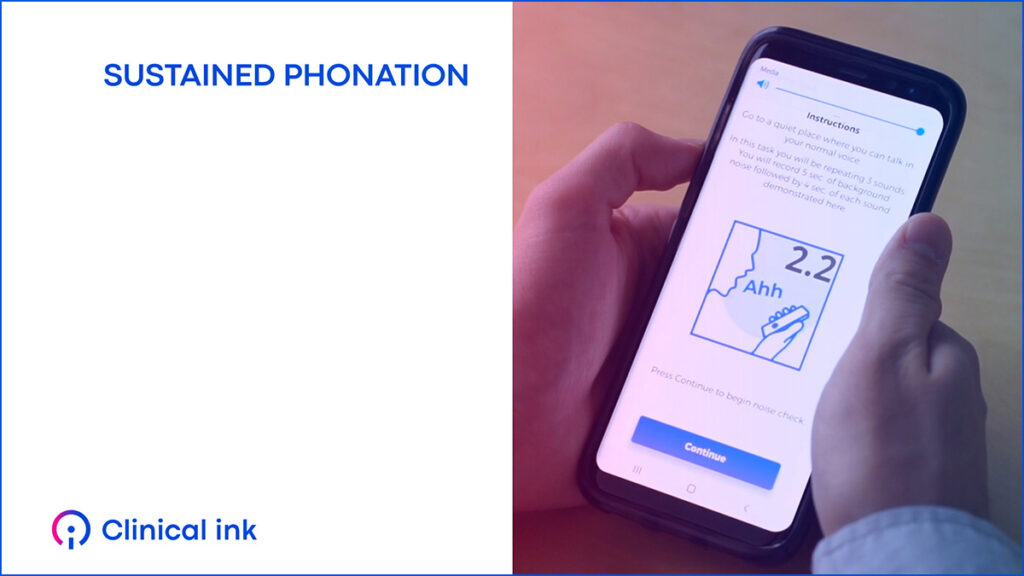Measure Emotional Affect, Voice, and Respiratory Function
The Clinical ink Mobile Phonation Assessment measures emotional affect, voice and respiratory function.
Data from the phonation assessment is captured by phone. Participants are instructed to speak syllables such as “ahh” as long and as loud as possible within a single breath.
Why Measure Phonation?
Phonation is sensitive to changes in emotional affect, voice, and respiratory function. Diseases affecting regions of the central nervous system involved in the ability to produce or maintain phonations over an extended period of time can negatively affect Phonation performance. For example, altered Phonation performance has been demonstrated in Parkinson’s disease, amyotrophic lateral sclerosis, multiple sclerosis, and respiratory disease.1-4 Using Phonation measurements, disease- and treatment-related changes in emotional affect, voice, and respiratory function can be estimated
Discover the Additional Advantages of Clinical ink’s Technology
Learn more about the Clinical ink’s sensors and wearables technology powers Mobile Phonation Assessments, as well as other mobility, cognitive, and speech assessments here, or download the Clinical ink Big Brain Book, a digital assessments and endpoints catalog.
Sources:
1. Tsanas, A., Little, M. A., McSharry, P. E., & Ramig, L. O. (2010). Nonlinear speech analysis algorithms mapped to a standard metric achieve clinically useful quantification of average Parkinson’s disease symptom severity. Journal of The Royal Society Interface, 8, 842–855.
2. Ramig, LR et al (1988). Acoustic analysis of voices of patients with neurologic disease: Rationale and preliminary data. Annals of Otology, Rhinology, & Laryngology, 97, 164-172.
3. Nordio, S et al (2018). Expiratory and phonation times as measures of disease severity in patients with multiple sclerosis: a case-control study. Multiple Sclerosis and Related Disorders, 23, 27-32.
4. Tong, JY & Sataloff, RT (2020). Respiratory function and voice: The role of airflow measures. Journal of Voice.
